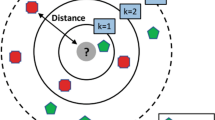Abstract
Over the past years, investigation on condition-based maintenance (CBM) technique on bearing has been conducted. Bearing diagnostics and prognostics are the important aspects in CBM. A key to the success of using vibration data for bearing fault diagnostics and bearing lifecycle prognostics is a quantified relationship between bearing damage and bearing fault features. To establish such a quantitative relationship, effective signal processing techniques to extract bearing fault features from vibration signals are needed. This paper describes a newly developed fault feature extraction method for bearing prognostics. The effectiveness of the method is demonstrated with two real bearing run-to-failure test datasets: one collected under normal operating conditions and another one under abnormal operating conditions. Experimental results show that the bearing fault features extracted using both traditional vibration analysis methods and the proposed method give clear bearing heath degradation trend for the dataset collected under normal operating conditions. However, for the data collected under abnormal operating conditions, bearing fault features obtained using traditional vibration analysis methods fail to show the bearing health degradation trend while the fault features extracted using the proposed method give consistent bearing degradation trends.
Similar content being viewed by others
References
Gebraeel N., Lawley M., Liu R., Parmeshwaran V. (2004) Residual life predictions from vibration-based degradation signals: A neural network approach. IEEE Transactions on Industrial Electronics 51: 694–700
He, D., & Bechhoefer, E. (2008a). Development and Validation of Bearing Diagnostic and Prognostic Tools using HUMS Condition Indicators. Proceedings of 2008 IEEE Aerospace Conference, Big Sky, MT.
He, D. & Bechhoefer, E., (2008b). Bearing prognostics using HUMS condition indicators, Proceedings of the 2008 AHS Forum, Montreal, Canada.
Heng R., Nor M. J. M. (1998) Statistical analysis of sound and vibration signals for monitoring rolling element bearing condition. Applied Acoustics 53: 211–226
Huang R., Xi L., Li X., Liu C., Qiu H., Lee J. (2007) Residual life predictions for ball bearings based on self-organizing map and back propagation neural network methods. Mechanical Systems and Signal Processing 21: 193–207
IEEE Motor ReliabilityWorking Group. (1986). Report of large motorreliability survey of industrial and commercial installations. IEEE Transactions on Industry Applications (IA-21), 4, 853–872.
Jardine A. K. S., Lin D., Banjevic D. (2006) A review on machinery diagnostics and prognostics implementing condition-based maintenance. Mechanical Systems and Signal Processing 20: 1483–1510
Li, R., He, D., & Bechhoefer, E. (2009). On quantification of bearing damage for lifecycle prognostics. Proceedings of AHS 65 2009 Conference, Dallas, TA.
Liu, Y., & He, D. (2008). Damage mechanics based bearing prognosis using HUMS condition indicators. Proceedings of 2008 MFPT Conference, Virginia Beach, VA.
Ljung, L. (1987). System identification: Theory for the user. Prentice Hall Information and System Sciences Seriers.
McFadden P.D., Smith J.D. (1984) Vibration monitoring of rolling element bearings by the high-frequency resonance technique—a review. Tribology International 17: 3–10
McInerny S. A., Dai Y. (2003) Basic vibration signal processing for bearing fault detection. IEEE Transactions on Education 46(1): 149–156
Najjar B. A. L. (2000) Accuracy, effectiveness and improvement of vibration-based maintenance in paper mills: Case studies. Journal of Sound and Vibration 229(2): 389–410
Prabhakar S., Mohanty A. R., Sekhar A. S. (2002) Application of discrete wavelet transform for detection of ball bearing race faults. Tribology International 35: 793–800
Raheja D., Llinas J., Nagi R., Romanowski C. (2006) Data fusion/data mining-based architecture for condition-based maintenance. International Journal of Production Research 44(14): 2869–2887
Sawalhi N., Randall R. B., Endo H. (2007) The enhancement of fault detection and diagnosis in rolling element bearings using minimum entropy deconvolution combined with spectral kurtosis. Mechanical Systems and Signal Processing 21: 2616–2633
Tse P., Peng Y., Yam R. (2001) Wavelet analysis and envelope detection for rolling element bearing fault diagnosis their effectiveness and flexibilities. Journal of Vibration and Acoustics 123: 303–310
Wang W., Wong A. (2002) Autoregressive model-based gear fault diagnosis. Journal of Vibration and Acoustics 124: 172–179
Yan R., Gao R. X. (2004) Complexity as a measure for machine health evaluation. IEEE Transactions on Instrumentation and Measurement 53: 1327–1334
Author information
Authors and Affiliations
Corresponding author
Rights and permissions
About this article
Cite this article
Li, R., Sopon, P. & He, D. Fault features extraction for bearing prognostics. J Intell Manuf 23, 313–321 (2012). https://doi.org/10.1007/s10845-009-0353-z
Received:
Accepted:
Published:
Issue Date:
DOI: https://doi.org/10.1007/s10845-009-0353-z




